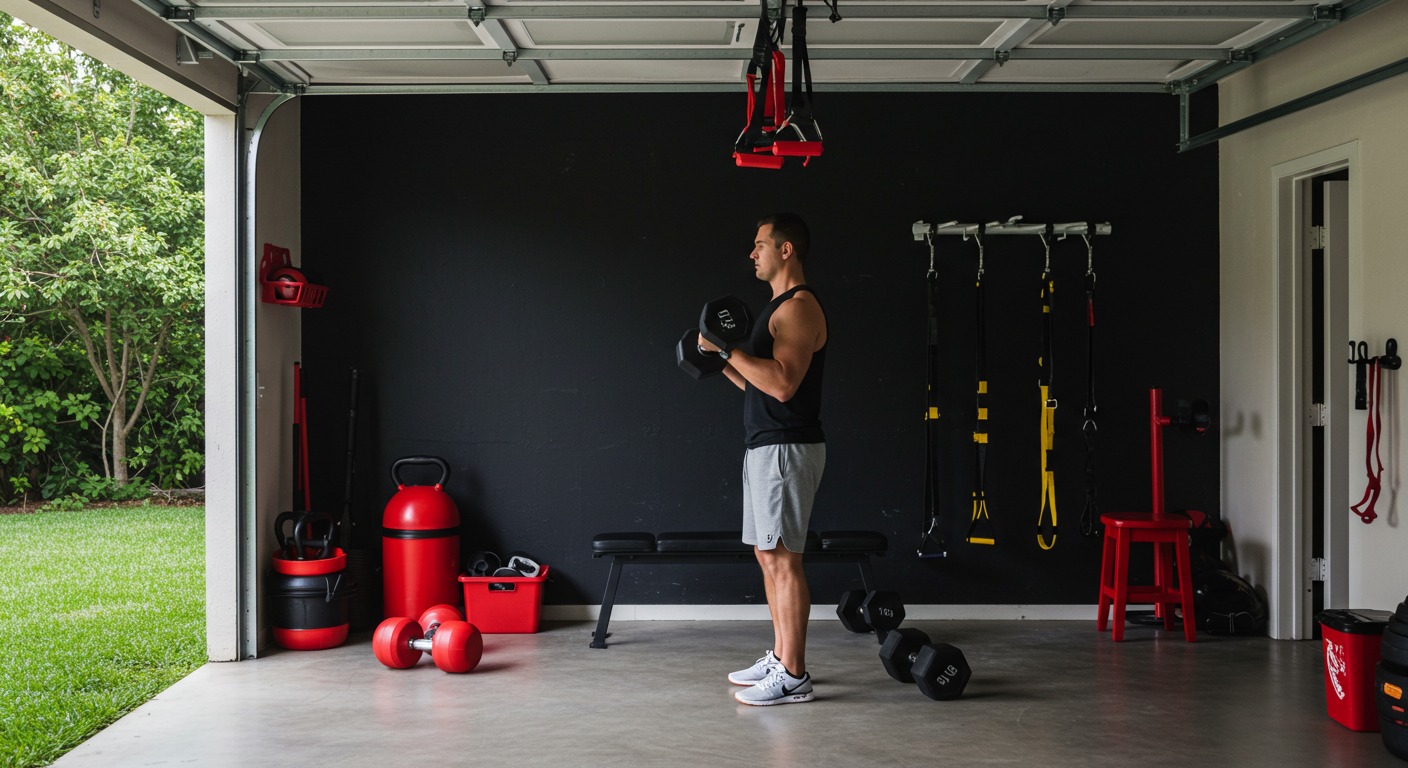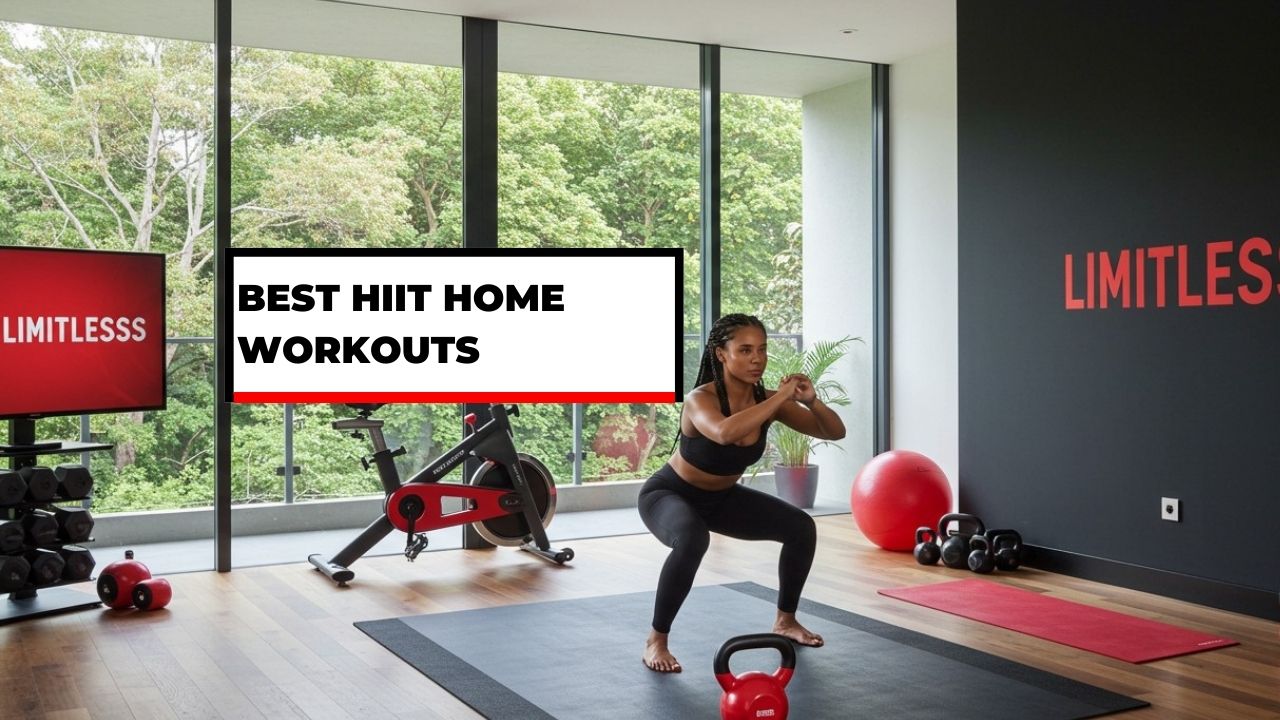Disclosure Information
This blog contains affiliate links. If you make a purchase through one of these links, our team may earn a commission at no extra cost to you. Learn more. Thanks for your support!
In the journey of fitness, what gets measured gets improved. Whether you’re building muscle, losing weight, or enhancing endurance, tracking your progress provides the feedback needed to optimize your efforts and maintain motivation. This comprehensive guide explores the various methods and tools available for monitoring your fitness evolution from the comfort of your home.
The Quick Overview: Best Tools for Fitness Progress Tracking
- Best Budget Scale: Renpho Smart Scale ($30)
- Best Beginner Wearable: Fitbit Inspire ($99)
- Best for Serious Athletes: Garmin Forerunner 255 ($349)
- Best Recovery Tracker: WHOOP Strap ($30/month subscription)
- Best Strength App: Strong App ($12.99/month)
- Best Paper Journal: The Simple Fitness Planner ($24.95)
- Best Heart Rate Monitor: Polar H10 ($89.95)
- Best All-in-One Platform: MyFitnessPal Premium ($9.99/month)
Why Tracking Matters: The Science Behind Measurement
The difference between casual exercise and structured training often comes down to one thing: intentional tracking. According to research published in the American Journal of Preventive Medicine, individuals who regularly tracked their fitness progress were 60% more likely to achieve their goals compared to non-trackers. (Source: American Journal of Preventive Medicine)
Tracking serves multiple crucial functions in your fitness journey:
- Accountability becomes built into your routine
- Objective measurements prevent the “perception gap”
- Data reveals patterns that subjective feelings miss
- Concrete evidence of progress fuels motivation
Essential Metrics Worth Monitoring
Body Composition Metrics
Understanding your body’s changing composition provides deeper insights than weight alone. These metrics help differentiate between fat loss and muscle gain.
Weight
Daily weight fluctuations are normal and influenced by factors including hydration, meal timing, and hormonal changes. For meaningful data:
- Track at the same time daily (preferably morning)
- Use weekly averages rather than daily readings
- Consider weight trends instead of absolute numbers
Body Fat Percentage
More revealing than weight, body fat percentage indicates your true progress in fat loss or muscle building efforts.
Measurements
Strategic measurements of key body areas provide clear indicators of changing body composition:
| Body Area | Measurement Frequency | Notes |
|---|---|---|
| Waist | Weekly | At navel level |
| Hips | Bi-weekly | Widest point |
| Thighs | Monthly | Mid-thigh |
Performance Metrics
While aesthetic changes motivate many, performance improvements often precede visible results and provide powerful motivation.
Strength Progress
Tracking your lifting progress reveals growth that mirrors neurological and muscular adaptations. Consider monitoring:
- One-rep maximums for compound lifts
- Volume (sets × reps × weight)
- Recovery time between sets
- Exercise progression variations
A 2022 study in the Journal of Strength and Conditioning Research found that trainees who systematically tracked strength metrics increased their one-rep maximums by an average of 29% compared to 11% in non-tracking groups. (Source: Journal of Strength and Conditioning Research)
Cardiovascular Endurance
Even with limited equipment, you can monitor cardiovascular improvements:
- Resting heart rate (lower indicates better fitness)
- Heart rate recovery after exertion
- Time to complete fixed-distance workouts
- Perceived exertion for standard workouts
Tools for Tracking Progress
The right tracking tools transform abstract goals into concrete achievements. Modern technology offers options ranging from simple to sophisticated.
Basic Tools
Notebooks and Journals
Nothing beats the reliability and engagement of manual tracking. Benefits include:
- No batteries or charging required
- Customizable to your specific needs
- Physical act of writing enhances commitment
- Complete privacy of your data
Workout journals with structured templates provide organization while allowing personalization. Consider journals with:
- Dedicated sections for different metrics
- Space for reflective notes
- Progress visualization pages
- Goal-setting frameworks
Basic Scales and Measuring Tapes
Affordable and effective, these remain fitness tracking staples:
| Tool | Recommended Features | Approximate Price |
|---|---|---|
| Digital Scale | 0.2 lb precision | $25-50 |
| Measuring Tape | Locking mechanism | $5-15 |
| Skinfold Calipers | Multiple measurement sites | $15-30 |
Digital Tracking Solutions
Fitness Apps
The explosion of fitness technology has created specialized apps for every tracking need:
- Strength Training Apps: Progressive Overload, StrongLifts, Fitbod
- Cardio Tracking: Strava, MapMyRun, Nike Run Club
- Comprehensive Platforms: MyFitnessPal, Fitbit App, Apple Health
When selecting tracking apps, prioritize:
- User-friendly interfaces that minimize friction
- Data visualization that motivates action
- Integration with other health metrics
- Community features if social accountability helps you
Wearable Fitness Trackers
Fitness trackers have evolved from simple step counters to comprehensive health monitoring devices. A 2023 analysis by the International Journal of Sports Medicine found that consistent wearable tracker users improved fitness metrics 32% faster than control groups. (Source: International Journal of Sports Medicine)
Modern trackers offer features including:
- 24/7 heart rate monitoring
- Sleep quality analysis
- Stress level measurement
- Workout detection and analysis
- Recovery metrics and recommendations
Popular options include:
| Brand | Best For | Price Range |
|---|---|---|
| Fitbit | Beginners | $100-250 |
| Garmin | Athletes | $150-500 |
| Apple Watch | iOS users | $250-700 |
Advanced Measurement Tools
Smart Scales and Body Composition Analyzers
For those serious about body composition tracking, smart scales provide:
- Body fat percentage estimation
- Muscle mass measurement
- Water retention monitoring
- Bone density estimates
- Automatic data syncing to apps
While consumer-grade bioelectrical impedance devices aren’t laboratory-precise, their consistency makes tracking trends valuable.
Heart Rate Monitors
Dedicated heart rate monitors offer advantages over wrist-based tracking:
- Greater accuracy during intense movement
- More detailed training zone data
- Better battery life and durability
- Advanced metrics like HRV analysis
Creating Your Perfect Tracking System
Matching Methods to Goals
Your tracking approach should align with your specific fitness objectives:
- Weight loss focus: Prioritize body composition metrics and nutrition tracking
- Strength building: Emphasize performance metrics and recovery quality
- Endurance development: Center on cardiovascular metrics and training volume
- General fitness: Balance multiple measurement approaches
Frequency Considerations
Effective tracking requires appropriate measurement frequency:
- Daily: Steps, workouts, subjective energy
- Weekly: Weight, key performance metrics
- Monthly: Comprehensive measurements, progress photos
- Quarterly: Fitness assessments, goal realignment
Avoiding Tracking Pitfalls
Data Obsession
Tracking should enhance your fitness journey, not consume it. Warning signs include:
- Emotional distress from normal fluctuations
- Workout quality sacrificed for trackable metrics
- Avoidance of activities that can’t be measured
- Comparing your data to inappropriate benchmarks
Inconsistent Methodology
Maintain measurement consistency for meaningful comparisons:
- Use the same devices consistently
- Measure at the same time of day
- Follow identical measurement procedures
- Control for variables when possible
Using Data to Optimize Your Training
Identifying Patterns
The true value of tracking emerges when you analyze data for insights:
- Correlation between recovery quality and performance
- Optimal training frequency for your body
- Nutrition patterns that support your goals
- Early warning signs of overtraining
Adjusting Based on Evidence
Let your tracking data guide intelligent training decisions:
- Increase volume when progress plateaus
- Modify recovery protocols when fatigue accumulates
- Adjust nutrition when energy lags
- Celebrate and build on confirmed strengths
Progress Beyond Numbers
Non-Quantifiable Improvements
While numbers provide objectivity, also acknowledge improvements in:
- Movement quality and form
- Exercise variety and complexity
- Workout consistency and adherence
- Mental relationship with fitness
Visual Documentation
Progress photos offer powerful motivation when numbers plateau:
- Take photos under consistent conditions
- Maintain similar poses and clothing
- Store chronologically for easy comparison
- View objectively rather than critically
Product Recommendations for Effective Tracking
For Beginners
Start with reliable basics that won’t overwhelm:
- Renpho Smart Scale: Affordable body composition tracking with app integration
- Fitbit Inspire: Entry-level activity and sleep tracking
- Simple Fitness Planner: Paper-based workout and measurement logging
For Intermediate Trackers
Enhance your tracking with more comprehensive tools:
- Garmin Forerunner: Detailed workout analysis and recovery metrics
- Strong App Premium: Comprehensive strength training insights
- MyFitnessPal Premium: Nutrition tracking with macro analysis
For Advanced Fitness Enthusiasts
Maximize insights with sophisticated tracking equipment:
- WHOOP Strap: Recovery-focused metrics including HRV and sleep quality
- InBody Scale: Higher-accuracy body composition analysis
- Polar H10 Heart Rate Monitor: Gold-standard cardiovascular tracking
Integrating Multiple Tracking Methods
The most effective tracking systems combine complementary approaches:
- Digital tracking for automation and analysis
- Manual recording for mindfulness and engagement
- Visual documentation for motivation
- Performance metrics for objective feedback
Conclusion
The most valuable tracking system is one you’ll maintain consistently. Start simple, focusing on metrics most relevant to your goals, and gradually incorporate additional measurements as your journey progresses.
Remember that tracking serves your fitness goals—not the reverse. Use these tools and methods to inform better decisions, celebrate legitimate progress, and build a sustainable relationship with fitness that extends beyond any single measurement.
By implementing an appropriate tracking system, you transform abstract fitness aspirations into a concrete, measurable journey with clear milestones and evidence-based direction. Your future self will thank you for the roadmap you’re creating today.


